GEMSTONES
Many of our jewelry items feature gemstones. On this page, you can learn a bit more about them.
CATS EYE
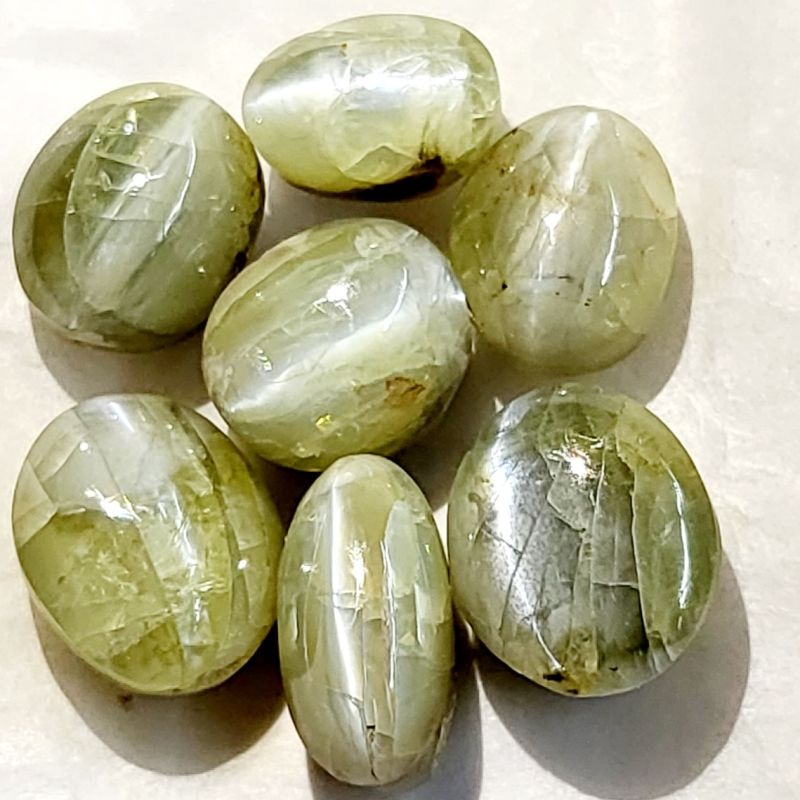 Cat’s eye gems, known as chrysoberyl cat’s eye, exhibit a unique optical phenomenon called chatoyancy. This effect creates a luminous band resembling a cat’s slit-like eye. Typically green or yellowish-brown, these gems are valued for their mystical appearance and are believed to bring good fortune and insight to the wearer.
Cat’s eye gems, known as chrysoberyl cat’s eye, exhibit a unique optical phenomenon called chatoyancy. This effect creates a luminous band resembling a cat’s slit-like eye. Typically green or yellowish-brown, these gems are valued for their mystical appearance and are believed to bring good fortune and insight to the wearer.
HOWLITE
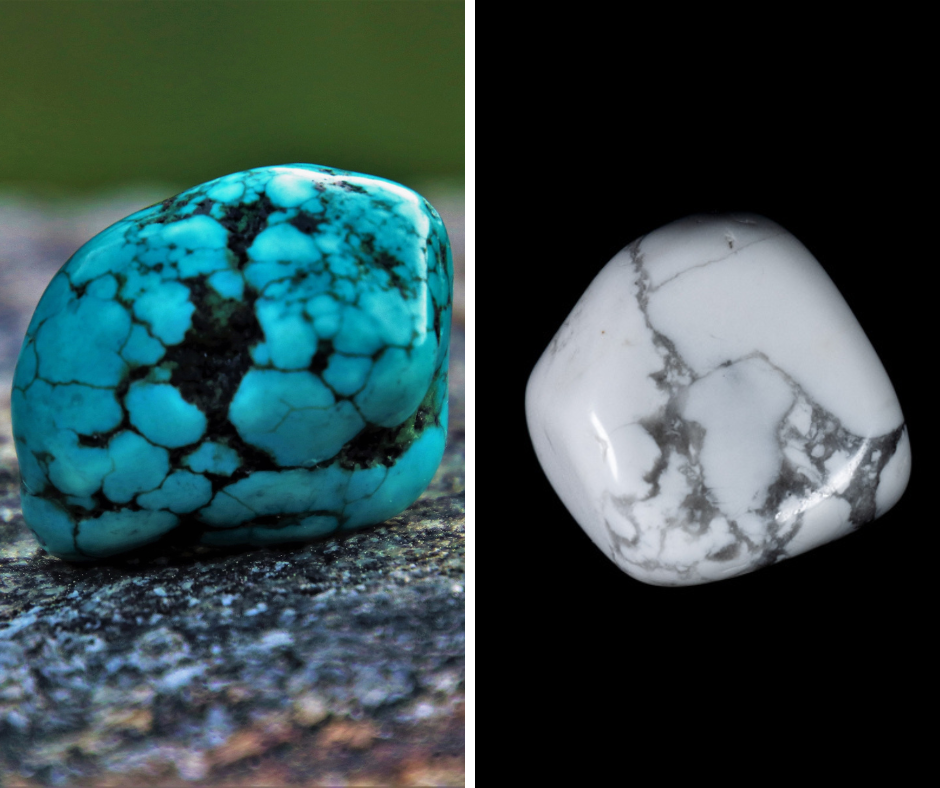 HOWLITE is frequently referred to as ‘fake turquoise.’ In its natural state, howlite is white but can be dyed to mimic turquoise. In the grand scheme of geology, howlite was very recently discovered in Nova Scotia in 1868 by Canadian mineralogist Henry How for whom the mineral is named. It is sold in its natural state as ‘white turquoise’ or ‘white buffalo turquoise.’ Those who sense and pick up ‘energy’ from crystals suggest that turquoise howlite is a great stone to reduce anxiety, tension, stress, and anger, it is gentle, and soothing calms the energy around you, and can help eliminate pain, and de-fuse stress and anger. Its calming influence can help insomnia sufferers to achieve a deep and restful sleep.
HOWLITE is frequently referred to as ‘fake turquoise.’ In its natural state, howlite is white but can be dyed to mimic turquoise. In the grand scheme of geology, howlite was very recently discovered in Nova Scotia in 1868 by Canadian mineralogist Henry How for whom the mineral is named. It is sold in its natural state as ‘white turquoise’ or ‘white buffalo turquoise.’ Those who sense and pick up ‘energy’ from crystals suggest that turquoise howlite is a great stone to reduce anxiety, tension, stress, and anger, it is gentle, and soothing calms the energy around you, and can help eliminate pain, and de-fuse stress and anger. Its calming influence can help insomnia sufferers to achieve a deep and restful sleep.
OPAL
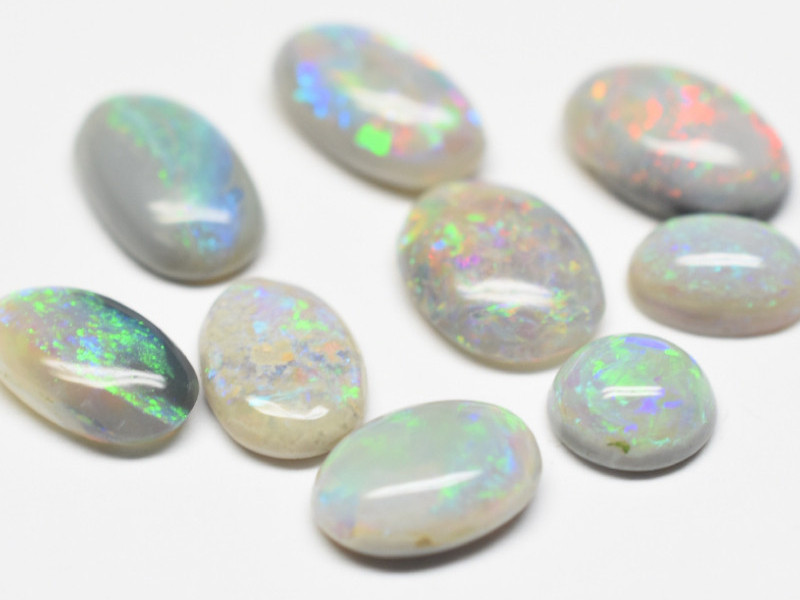 OPALs are prized gemstones that exhibit a stunning play-of-color due to light diffraction within silica spheres. Mainly sourced from Australia, notably Lightning Ridge, opals symbolize hope, purity, and truth. In some cultures, opals are said to have fallen from heaven. In ancient Rome, opals love and hope; in other cultures, opal represents royalty, good luck, and fortune. They are delicate in nature and require careful handling. These iridescent gems are often set in jewelry, captivating admirers with their unique beauty and spectral brilliance. Opal is the original October birthstone.
OPALs are prized gemstones that exhibit a stunning play-of-color due to light diffraction within silica spheres. Mainly sourced from Australia, notably Lightning Ridge, opals symbolize hope, purity, and truth. In some cultures, opals are said to have fallen from heaven. In ancient Rome, opals love and hope; in other cultures, opal represents royalty, good luck, and fortune. They are delicate in nature and require careful handling. These iridescent gems are often set in jewelry, captivating admirers with their unique beauty and spectral brilliance. Opal is the original October birthstone.
RED CORAL
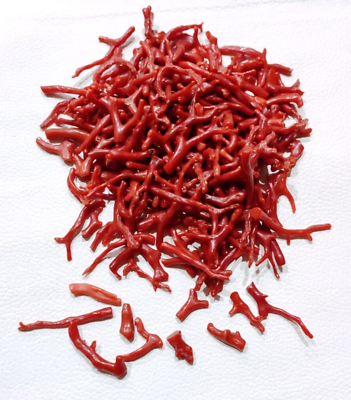 Red coral is a precious marine organism with a vibrant red hue, primarily found in the Mediterranean Sea and the Pacific. It is said to absorb negativity and to energize friendships. Many believe red coral gives motivation and protects the wearer from depression by calming emotions and bringing peace. In physical healing, it is said to help with conditions of the bladder and kidneys by stimulating tissue regeneration. It is also known to strengthen the circulatory system.
Red coral is a precious marine organism with a vibrant red hue, primarily found in the Mediterranean Sea and the Pacific. It is said to absorb negativity and to energize friendships. Many believe red coral gives motivation and protects the wearer from depression by calming emotions and bringing peace. In physical healing, it is said to help with conditions of the bladder and kidneys by stimulating tissue regeneration. It is also known to strengthen the circulatory system.
STERLING SILVER
![]() Sterling silver holds significant cultural and aesthetic importance in Native American jewelry. Renowned for its durability and shine, sterling silver consists of 92.5% pure silver and 7.5% alloy, often copper, ensuring both strength and malleability. Native American artisans skillfully craft intricate designs, incorporating symbols such as feathers, animals, and geometric patterns that convey cultural stories and spirituality. The use of sterling silver reflects a deep connection to tradition and nature, emphasizing the importance of balance and harmony. Beyond its visual appeal, sterling silver in Native American jewelry symbolizes a timeless link to heritage, spirituality, and the enduring craftsmanship of indigenous communities, making each piece not just a beautiful adornment but also a meaningful cultural expression.
Sterling silver holds significant cultural and aesthetic importance in Native American jewelry. Renowned for its durability and shine, sterling silver consists of 92.5% pure silver and 7.5% alloy, often copper, ensuring both strength and malleability. Native American artisans skillfully craft intricate designs, incorporating symbols such as feathers, animals, and geometric patterns that convey cultural stories and spirituality. The use of sterling silver reflects a deep connection to tradition and nature, emphasizing the importance of balance and harmony. Beyond its visual appeal, sterling silver in Native American jewelry symbolizes a timeless link to heritage, spirituality, and the enduring craftsmanship of indigenous communities, making each piece not just a beautiful adornment but also a meaningful cultural expression.
TURQUOISE
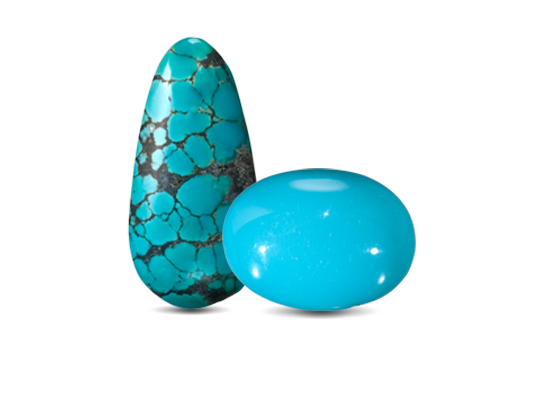 TURQUOISE is a vibrant blue-green gemstone prized for its unique color. Mined primarily in the United States, Iran, and Mexico, it has been valued for centuries for its beauty and cultural significance. Used in jewelry and art, turquoise is also believed to possess healing properties in various cultures. Turquoise is one of the world’s most ancient gems. Archaeological excavations revealed that the rulers of ancient Egypt adorned themselves with turquoise jewelry, and Chinese artisans were carving it more than 3,000 years ago. Turquoise has long been considered a stone that guarantees health, good fortune, and protection from evil. Turquoise was a ceremonial gem and a medium of exchange for Native American tribes in the southwestern US. They also used it in their jewelry and amulets. The Apaches believed that turquoise attached to a bow or firearm increased a hunter’s or warrior’s accuracy. Turquoise is one of the birthstones of December.
TURQUOISE is a vibrant blue-green gemstone prized for its unique color. Mined primarily in the United States, Iran, and Mexico, it has been valued for centuries for its beauty and cultural significance. Used in jewelry and art, turquoise is also believed to possess healing properties in various cultures. Turquoise is one of the world’s most ancient gems. Archaeological excavations revealed that the rulers of ancient Egypt adorned themselves with turquoise jewelry, and Chinese artisans were carving it more than 3,000 years ago. Turquoise has long been considered a stone that guarantees health, good fortune, and protection from evil. Turquoise was a ceremonial gem and a medium of exchange for Native American tribes in the southwestern US. They also used it in their jewelry and amulets. The Apaches believed that turquoise attached to a bow or firearm increased a hunter’s or warrior’s accuracy. Turquoise is one of the birthstones of December.

